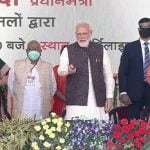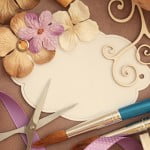
Have you ever felt something amiss after you’ve purchased a bicycle? Do you feel confused and lost about what to add to your new bike? Walking into a bike shop and seeing the sheer amount of stuff staring you in the face can be overwhelming. If you’re not cautious, you might end up buying things that are unnecessary and miss out on what’s really essential. This guide is here to help you choose the right accessories for your bicycle and to get you started on your cycling journey.
The Essentials
- Helmet
One of the most common injuries cyclists suffer is a head injury, which can range from anything like a cut or bruise to a traumatic brain injury. Global research in the cycling industry has shown that helmets reduce the risk of severe brain injuries by about 88 percent. It doesn’t matter where you ride – the roads, the countryside or even around the block – always wear a helmet. There are different helmets for different cycling disciplines, but they all serve one purpose – to protect your head. So, make sure you get one that fits you properly.
- Lock
If you own a bicycle, you should also own a lock. If you don’t, purchase one right now! Other than providing bike security, it also deters bike thieves. 92 percent of bicycle owners lock their bike with some sort of a locking device. Any bike that looks old and used will be a sight for sore eyes to thieves, but a new bike with a sturdy lock will impede any sort of bike theft. Hence, locks are a must have for every rider. Bike locks are rated on a scale of 1 to 10, where 10 is the maximum amount of security provided based on lock material and strength. Types of locks range from cable locks to chain locks to D locks. Ensure you loop both your wheel and frame securely while locking your bike.
- Lights
There are 3 benefits of cycling lights: reflection, visibility and safety. Cyclists are road users like every other vehicle that needs to ‘see’ and ‘be seen’ in all light conditions. There are two types of lights that a cyclist must use: a front light, which enables the rider to see the road ahead (in dimly lit conditions), spot important road signs and also be identified by oncoming traffic. Be sure to point the light downwards so as to not blind the oncoming driver. A rear light allows other road users or vehicles to identify other road users (i.e. cyclists) from the rear in any light conditions. It goes to say that reflectors won’t make you visible from over a long distance, although some of these lights will make you shine!
- Apparel
As a cyclist, I can only recommend two essential apparels: padded shorts and a reflective jersey or vest. While reflective vests serve only one purpose and that is visibility, padded shorts have a huge role to play in comfort and health. Modern cycling shorts are made of spandex (lycra), a highly elastic fabric on to which a ‘chamois’ or pad is stitched. The ‘chamois’ or pad acts as a comfort interface between the rider and the saddle. Padded shorts’ benefits like chafing prevention, soft tissue area protection, sweat wicking, friction prevention and muscular stability make them a must-have for every cyclist, be it a beginner or a professional. Although at first wear, they may be tight, give them a ride or two to completely settle in. Make sure to know your size before you try them on. And remember, cycling shorts are like a second skin, nothing must be worn underneath them.
- Pump
Have you ever had a puncture and stood on the side of the road hoping you had a pump to inflate your tire? Essentially, it is recommended that all cyclists have two pumps with them. First, a floor pump for home use which comes with a larger chamber, a hose and a pressure gauge. Plus they can be used to fill up larger objects like footballs or inflatable pools. A floor pump will also come in handy for those pre-ride pressure checks. Check with your tire manufacturer for the recommended tire pressure (in PSI or bar). Second, a small and compact hand pump comes in handy during your rides. They are equipped with smaller chambers and two types of valve fitters. Additionally, they are very portable and can be fitted on to your frame or carried in your jersey pocket, frame bag or backpack.
- Multi-tool
A multi-tool should be a staple item that any cyclist should carry with them on a ride. Mechanical problems can occur even if your bike is a hundred percent tuned. A basic multi-tool consists of several Allen keys or Hex-keys to help you make adjustments to bolts that may have come loose during a ride. Some multi-tools come with added tools like a chain breaker to re-attach your broken chain. Potentially, more added tools in your multi-tool means a little added weight and more technicality. If you’ve got the right tool with you, these problems can be easily fixed mid ride. Check out these multi-tools.
- Patch repair kit and tire levers (or spare inner tube)
The most reliable fix for a punctured inner tube is to simply replace the inner tube. However, if the hole is small enough, it can be patched up using a patch repair kit. A patch repair kit is a set of adhesive stickers for the puncture holes on the butyl inner tube. An essential part of fixing a flat is also learning how to use tire levers. Using any other tool other than a pair of tire levers could result in damage to the inner tube. Carrying tire levers plus a patch repair kit or a spare inner tube on your ride will save you that extra trip to your bike shop. Furthermore, it’s really satisfying to change an inner tube. Head over here to learn how to replace an inner tube.
- Hydration
Make no mistake, cycling is quite an exhaustive sport. Approximately 60 percent of our body is composed of water and studies have shown that dehydration often leads to mental and physical fatigue. Replacing those lost fluids caused by perspiration (or sweating) is essential to not only being energized on your rides but also to prevent cramps. To keep your fluids stored in compact containers, consider purchasing a bottle meant to fit into the bottle cage mounts on your bike. Bottle cage mounts will provide you with easy access to your bottle while you’re pedaling, which eliminates the hassle of you halting your ride.
- Storage bag
Carrying all your valuables like keys, phone, money etc. on your ride can be quite overwhelming. Plus, your spare tube and multi-tool need space to be stored safely too. Storage options like saddle bags (to be fastened under the saddle), handlebar bags (to be fastened on the handlebar) and frame bags (to be fastened on the bike frame) come in handy. With ample capacity, a rider can store multiple items like a phone and spare parts. Many cycling storage bags are waterproof and are easy to assemble and dismantle with the help of velcro straps and buckles.
- Bell
Usually made of aluminium, a very useful accessory to signal your presence to other riders, motorists and pedestrians, especially in heavy traffic conditions. Emitting a sound of approximately 75 dB, a bicycle bell is useful in all terrains. It’s much easier to ding than to shout out to alert your presence. Bells come in all shapes, sizes and colors, find the right one based on your personal preferences here.
Purchasing additional accessories can serve only as a benefit to a cyclist. In an ever-expanding global cycling market, the demand for cycling accessories has grown exponentially. Cyclists are constantly looking to add one accessory or the other to make their ride a little more comfortable and resourceful. Granted that many who look to purchase a bicycle have a fixed budget, it would definitely be helpful in the long run if you keep the above accessories in mind before you purchase your bike, to make your ride more convenient and satisfying.
[“source=decathlon”]










